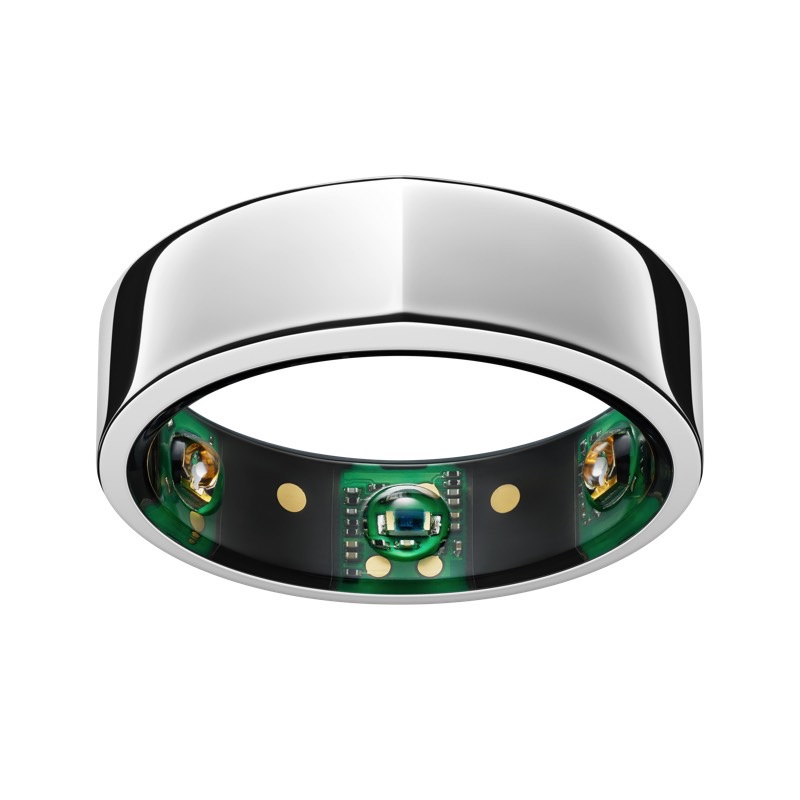- The West Virginia University Rockefeller Neuroscience Institute and WVU Medicine are looking to detect novel coronavirus symptoms in healthcare workers early with the use of a smart ring.
- The Oura Ring can “capture body signals like resting heart rate, [heart rate variability], body temperature, and calorie burn,” and analyze sleep.
- The study will use AI to attempt to interpret health parameters in real-time to predict a COVID-19 outbreak.
- Visit BGR’s homepage for more stories.
The only way to diagnose the novel coronavirus infection correctly is with a specialized type of test. A swab from your mouth or nose is enough to detect the presence of a viral load. A second test can look for COVID-19 antibodies in your blood and determine whether your immune system has fought off the infection — or whether it’s just starting to fight it. But there aren’t enough tests to go around, and you need to meet specific criteria to get a test in some countries. As for immunity tests, they’ve yet to be widely deployed, with the CDC set to approve one in the coming weeks.
COVID-19 has some specific signs, but not all patients exhibit them. And the most common ones are also common to the flu. Add to that the fact that the novel coronavirus is infectious even in people who have no symptoms, and that the incubation period is quite long, and you end up with a huge problem. Singapore, South Korea, Taiwan, Germany, and Iceland proved how critical it is to conduct large testing campaigns. But finding COVID-19 patients early is difficult without tests. That’s where a wearable company might help, as researchers are trying to determine whether a smart ring can help them predict the outbreak of COVID-19 in healthcare workers.
The $299 Oura Ring is the device in question. Unlike other wearables and smartwatches, the ring can monitor a few additional health parameters. The device can “capture body signals like resting heart rate, [heart rate variability], body temperature, and calorie burn,” according to the company. One thing that stands out is the fever sensor, which can detect changes in temperature. We already know that fever is a common COVID-19 symptom.

Oura Health partnered with the West Virginia University Rockefeller Neuroscience Institute and WVU Medicine for the study. These parties are certainly not alone looking to employ data from wearable devices to detect COVID-19 cases early. Germany has started a similar screening program for the general population, one that uses all sorts of wearable devices. But the Oura Ring study sounds more sophisticated than the German one:
The RNI’s approach not only measures the onset of increased body temperature from the Oura ring and physical symptoms but goes beyond that by looking at the individual holistically – integrating physiologic measures with psychological, cognitive and behavioral biometrics, such as stress and anxiety. In real-time, this holistic approach can provide an early and more comprehensive assessment, tracking the mind-body connection and homeostasis in the context of asymptomatic infection. Through this analysis, the team can forecast and predict the onset of fever, cough, fatigue and other physical symptoms linked to viral infections. [Emphasis ours.]
It’s one thing to perform frequent temperature and pulse readings from a wearable device or to track sleeping patterns. Stress and anxiety levels can’t be measured objectively.
“We are continuously monitoring the mind-body connectivity through our integrated neuroscience platform measuring the autonomic nervous system, fatigue, anxiety, circadian rhythms, and other human resilience and recovery functions,” executive chair of the WVU Rockefeller Neuroscience Institute Dr. Ali Rezai said. “Our AI-driven models are currently predicting symptoms 24 hours prior to onset, and we are working toward a three-plus day forecast. This forecasting capability will help us get ahead of this pandemic; limit the spread to protect healthcare workers, their families, and our communities; and improve our understanding of health recovery.”
The following clip gives us an idea of what kind of data the AI will grab from the ring:
That sort of technology sounds too good to be true and it will be interesting to see if science can back up these claims. Being able to predict symptoms 24 hours before onset could be a significant development. Studies have shown that patients are contagious before symptoms kick in, if they ever do, so it will also be interesting to see if the AI can catch asymptomatic patients.

As for the HRV sensor, HRV, as explained by Harvard Health Publishing, might be a new way to track well-being. HRV measures the variation in time between each heartbeat, which can be an indication of the way the autonomic nervous system (ANS) is working:
[The] healthier the ANS the faster you are able to switch gears, showing more resilience and flexibility. Over the past few decades, research has shown a relationship between low HRV and worsening depression or anxiety. A low HRV is even associated with an increased risk of death and cardiovascular disease.
But wearable devices might not be as good as heart monitors at checking HRV. That said, we’ll just have to hope the RNI COVID-19 study works. The world definitely needs all the help it can get to beat this disease.








